A web client sends a request to http;//localhost:8081?dept=sales. What is the correct DataWeave expression to access the value of dept?
A. attributes.queryParams.dept
B. attributes.dept
C. message.queryParams.dept
D. vars.dept
Refer to the exhibits.
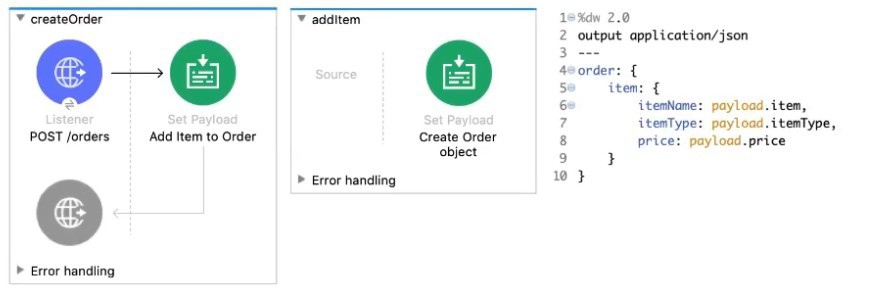
The Set Payload transformer In the addltem subflow uses DataWeave to create an order object.
What is the correct DataWeave code for the Set Payload transformer in the createOrder flow to use the addltem subflow to add a router cable with the price of 100 to the order?
A. addltemf { payload: { price: "100", item: "router", itemType: "cable" } > )
B. lookupf "addltem", { payload: { price: "100", item: "router", itemType: "cable" } } )
C. addltemf { price: "100", item: "router", itemType: "cable" })
D. lookupf "addltem", { price: "100", item: "router", itemType: "cable" } )
Refer to the exhibit.
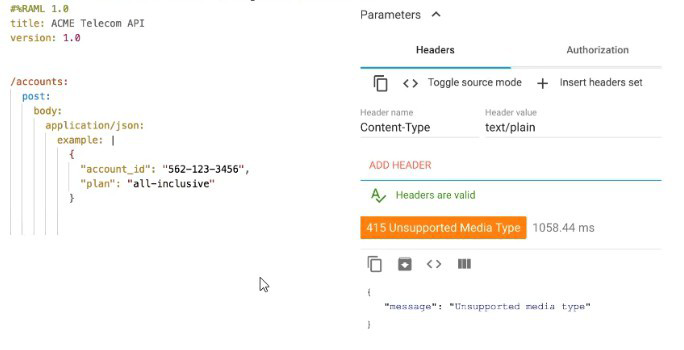
What should be changed to fix the 415 error?
A. set the response Content-Type header to text/plain
B. set the response Content-Type header to application/json
C. Set the request Content-Type header to application/] son
D. set the request Content-Type header to text/plain
Explanation: The HTTP 415 Unsupported Media Type client error response code indicates that the server refuses to accept the request because the payload format is in an unsupported format. The format problem might be due to the request's indicated Content-Type or Content-Encoding , or as a result of inspecting the data directly. In this case as per RAML specification data is expected in application/json and in request Content-Type is set as "text/plain" which is incorrect. Hence solution is set the request Content-Type header to application/json
Refer to the exhibit.
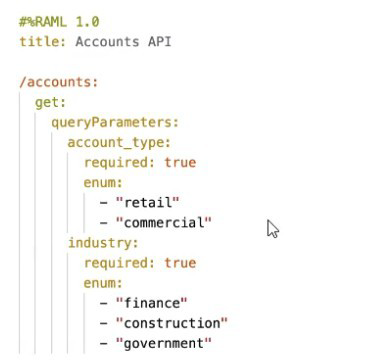
This RAML specification includes a resource and method to retrieve accounts by account_type and industry.
What is the correct URI to get all retail finance accounts?
A. /accounts/retail/finance
B. /accounts?account_type=retail&industry=finance
C. /accounts/account_type=retail/industry=finance
D. /accounts?account_type:retail&industry:finance
Explanation: Correct answer is /accounts?account_type=retail&industry=finance Query parameters are a defined set of parameters attached to the end of a url. They are extensions of the URL that are used to help define specific content or actions based on the data being passed. To append query params to the end of a URL, a ‘?’ Is added followed immediately by a query parameter. To add multiple parameters, an ‘&’ is added in between each.
Refer to the below exhibit.
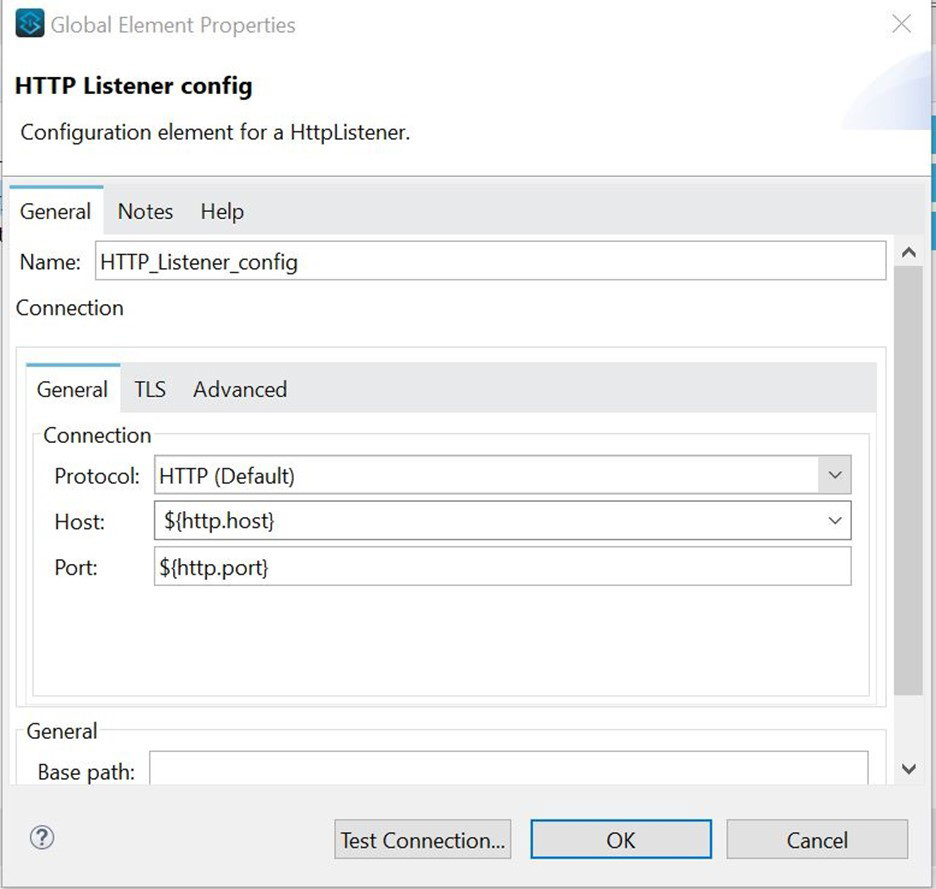
A Mule application configures a property placeholder file named config.yaml to set some property placeholders for an HTTP connector.
What is the valid properties placeholder file to set these values?
A. 1. http:
2. host = "localhost"
3. port = "8081"
B. 1. http:
2. basepath: "api"
3. host : "localhost"
4. port : "8081"
C. 1. http.host = localhost
2. http.port = 8081
D. 1.{
2. http:
3. basePath: "api",
4. port: "8081",
5. host: " localhost"
Explanation:
Correct answer is as below as it follows the correct syntax. http:
basepath: "api" host : "localhost" port : "8081"
Refer to the exhibits.
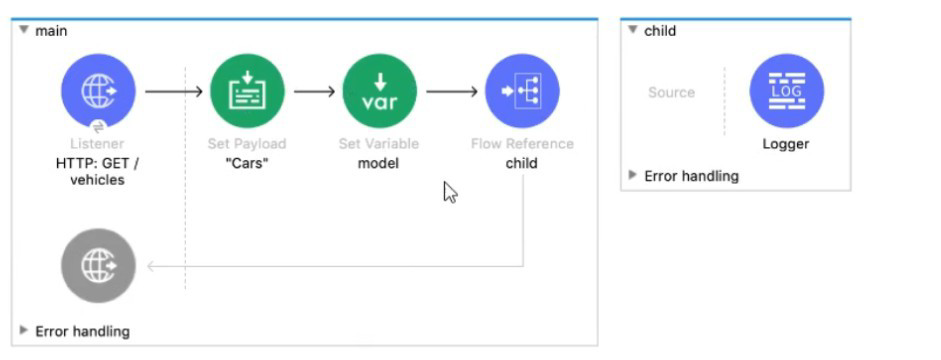
The main flow contains a Flow Reference to the child flow.
A web client sends a GET request to the main flow's HTTP Listener that includes a make query parameter.
What values are accessible in the child flow?
A. payload
B. payload
make query param
C. payload model var
D. payload
make query param model var
Refer to the exhibit.
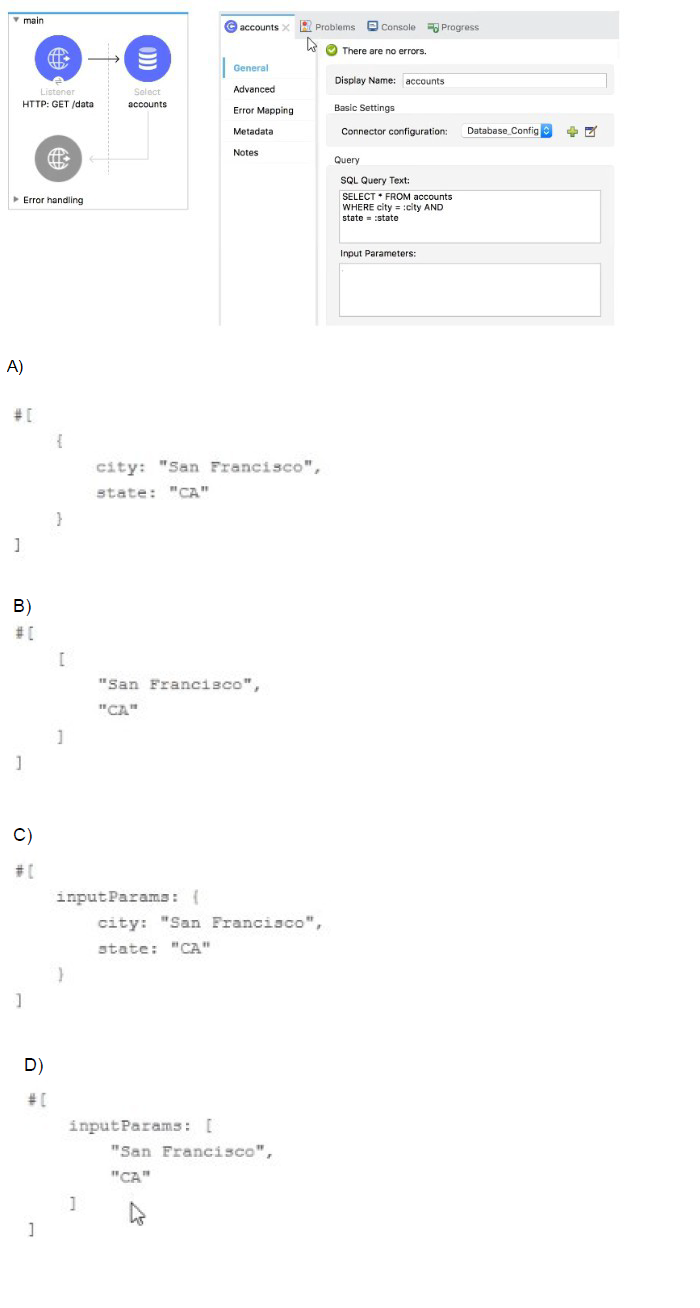
What expression correctly specifies input parameters to pass the city and state values to the SQL query?
A. Option A
B. Option B
C. Option C
D. Option D
A Mule application contains a global error handler configured to catch any errors.
Where must the global error handler be specified so that the global error handler catches all errors from flows without their own error handlers?
A. A configuration properties file
B. Nowhere, the global error handler is automatically used
C. A global element
D. The pom.xml file
Explanation:
Correct answer is A global element Global error handlers are to be created in global element .
Quick note to remember here is Global error handlers come in to picture only when there are no error handlers specified as flow level.
Steps to create Global error handler
1) Click Global Elements to open Global Configuration Elements. Global Elements is located below the Studio canvas
2) In Global Configuration Elements, click Create to open the Choose Global Type dialog
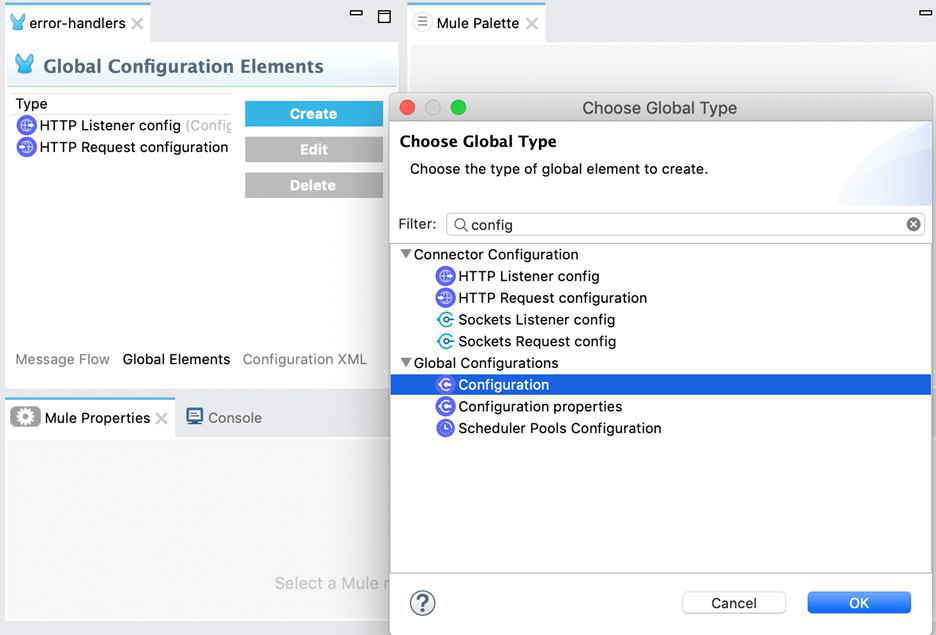
Graphical user
Description automatically generated
3) From the dialog, select Global Configuration - Configuration, and then click OK to open
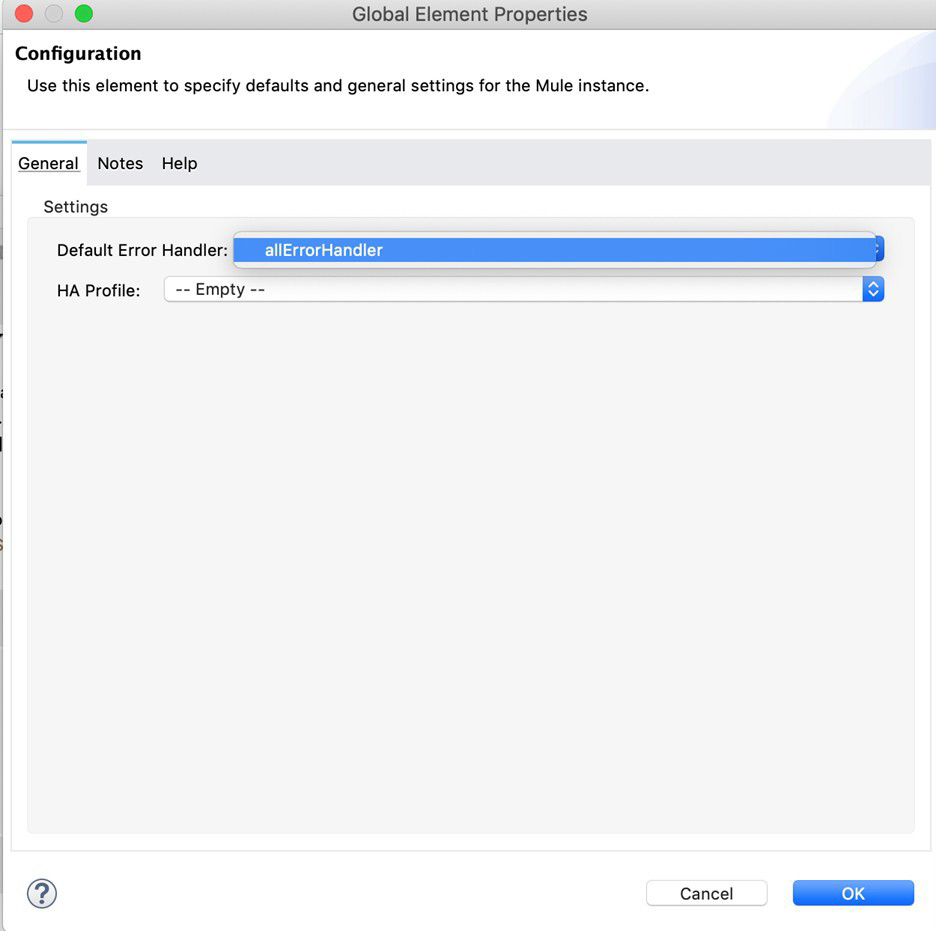
Graphical user
interface, text, application, email
Description automatically generated
4) From the select Configuration dialog, select allErrorHandler for the Default Error Handler field, and click OK.
What valid RAML retrieves details on a specific customer by its customerId as a URI parameter?
A. 1. /customers:
2. /get:
3. /customerId:
B. 1. /customers:
2. /{customerId}:
3. get:
C. 1. /customers:
2. /customerId:
3. get:
D. 1. /customers:
2. get:
3. /{customerId}:
Explanation:
Correct answer is below as it follows the correct syntax.
/customers:
/{customerId}:
get:
What statement is a part of MuleSoft's description of an application network?
A. Creates and manages high availability and fault tolerant services and infrastructure
B. Creates reusable APIs and assets designed to be consumed by other business units
C. Creates and manages a collection of JMS messaging services and infrastructure
D. Leverages Central IT to deliver complete point-to-point solutions with master data management
Explanation:
Creates reusable APIs and assets designed to be consumed by other business units
| Page 6 out of 24 Pages |
| Salesforce-MuleSoft-Developer-I Practice Test Home | Previous |